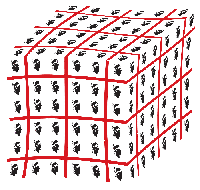Speaker
Keiko Murano
(High Energy Accelerator Research Organization, KEK)
Description
Recently, a new approach to calculate the nuclear potential from lattice QCD has been proposed. In this approach, the nuclear potential is constructed from Bethe-Salpeter (BS) wave functons through the Schroedinger equation. The procedure leads to non-local but energy independent potential U(r,r'), which can be expressed in terms of local functions by derivative expansion. In several recent applications of this method, local potentials, which correspond to the leading order (LO) terms of the derivative expansion, are calculated from the BS wave function at E \simeq 0 MeV, where E is the center of mass energy. It is therefore important to estimate the validity of the LO potential and size of contribution from higher order terms, which can be done by examining the energy and angular momentum dependence of the LO potential.
In this report, we will estimate the energy dependence of LO potential by comparing two LO potentials obtained at two energies in quenched lattice QCD with m_\pi = 530 MeV. We will also examin the possible L dependence of S=0 (spin singlet) potential, by comparing ^1S_0 and ^1D_2 central potentials. We find that, in each comparison, difference of the LO potentials is negligible within the statistical errors. This implies that the contribution from NLO terms are less significant, so that the LO potential obtained at E \simeq 0 (L \le 2) is valid up to (at least) 45 MeV (L=2) to describe the NN interaction in quenched QCD with m_\pi = 530 MeV.
| Please, insert your presentation type (talk, poster) | talk |
|---|
Author
Keiko Murano
(High Energy Accelerator Research Organization, KEK)
Co-authors
Prof.
Hidekatsu Nemura
(Tohoku University)
Dr
Noriyoshi Ishii
(Department of Physics, University of Tokyo)
Prof.
Sinya Aoki
(Graduate School of Pure and Applied Sciences, University of Tsukuba)
Prof.
Tetsuo Hatsuda
(Department of Physics, University of Tokyo)

